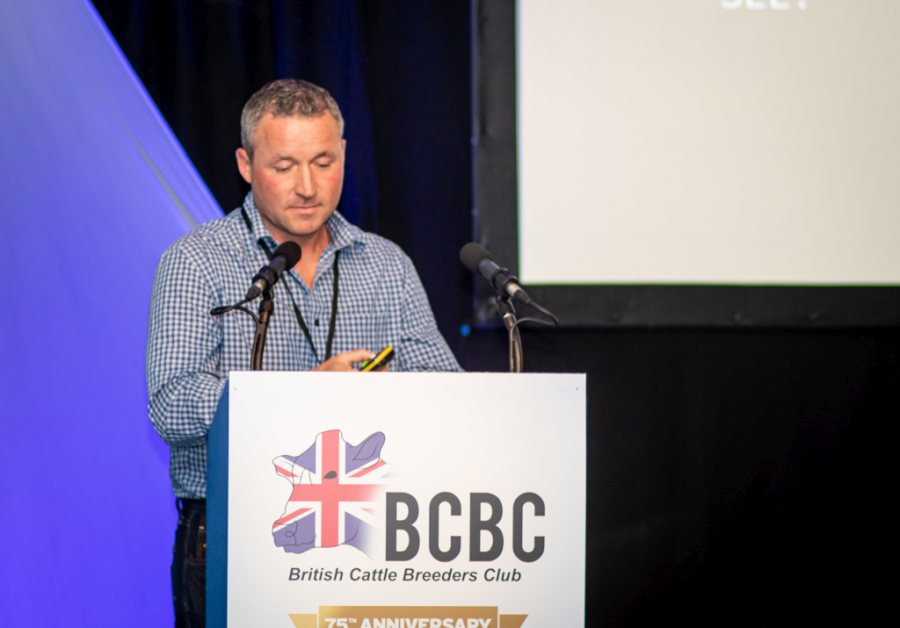
Canadian Aberdeen-Angus breeder Arron Nerbas encouraged UK beef farmers to ‘challenge tradition’ at the recent British Cattle Breeders Conference.
Mr Nerbas said many farmers had probably heard of the phrases: ‘that works for us’ or ‘that is how we have always done it’.
He said these can be the most expensive words in farming, as they make producers resistant to change.
“Tradition is very much entrenched in farming, but we need to be open-minded and consider our options as we move forward,” he urged delegates at the conference.
Mr Nerbas runs 75 purebred and 475 commercial Aberdeen-Angus cows across 2,023ha (5,000 acres) in Manitoba, Canada.
Along with his brother Shane, they have been practising regenerative and holistic grazing principles since 2005 – ideas he says his parents, Cynthia and Gene, have embraced, but would not have considered when they started farming.
This means they have a small 575kg cow, on average, that can thrive off grass and outwinter on bale grazing for four months in daytime temperatures of -30C, with no fertiliser used.
“The key benefits are healthy soil, increased resilience to drought and increased biodiversity,” explained Mr Nerbas.
“Over the past 20 years, through our grazing management, we have increased our forage production by 2-2.5 times. You don’t have to get more land or more cows to make more money.”
The herd has been closed for 20 years with new genetics introduced via artificial insemination (AI).
However, in the future, they plan to use their own bulls because they feel they have enough genetic variation within the herd.
Mr Nerbas said Aberdeen-Angus cattle were well suited to his system thanks to their efficiency and ability to maintain body condition within his 100% forage-fed system.
When choosing replacements he takes a system-based approach, rather than letting his cows define the system he runs.
“Farmers love the cow too much,” said Mr Nerbas,“I see cattle through a different lens. I love what the cow can do more than the cow itself.”
He believes farmers should choose the system they want and find the cow to fit it.
Heifers are selected on phenotype alone and strict system pressure determines which ones make the grade. Milk and cow size have been reduced over the years to make the herd efficient foragers.
He said this works well in their ‘optimum performance model’, aimed at producing maximum meat per acre.
He expects heifers and cows to birth unassisted, maintain body condition, wean more than 50% of their bodyweight at 205 days and re-breed at 55 days post-calving.
These strict but simple selection criteria are delivering less than 2% assisted calvings and they are weaning 85% of calves put to the bull.
He added: “Change is often where you will find opportunity.”
